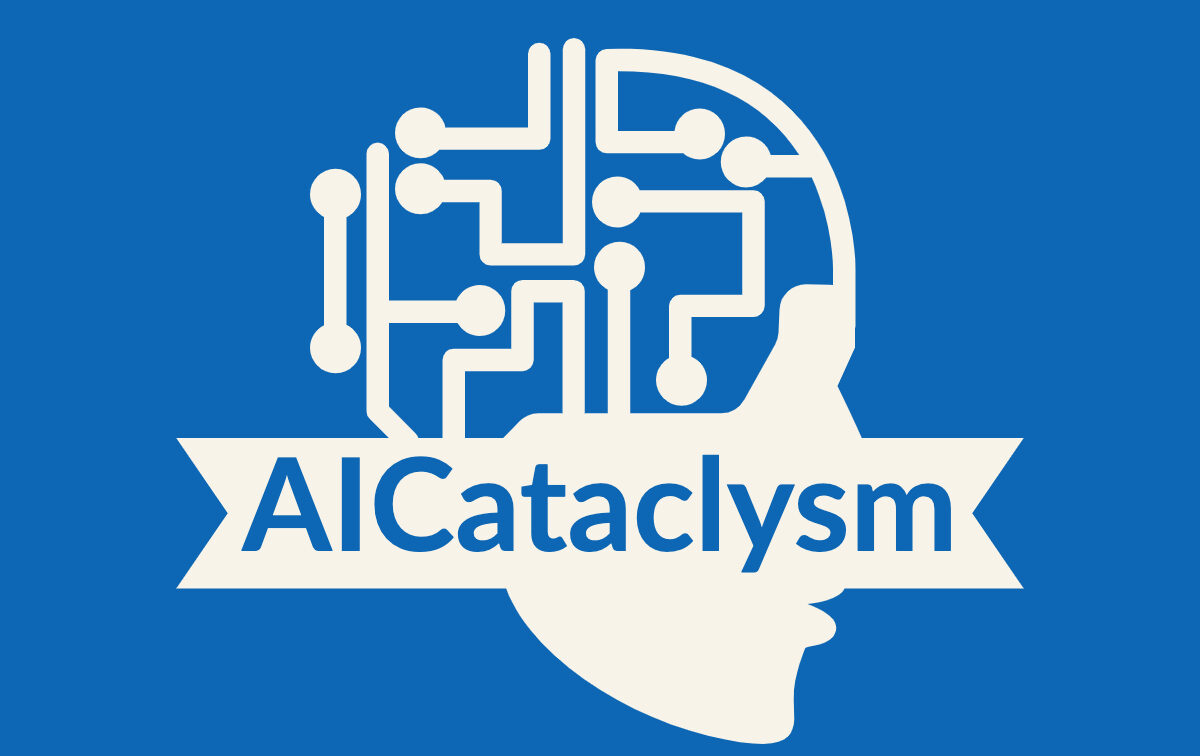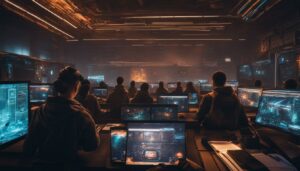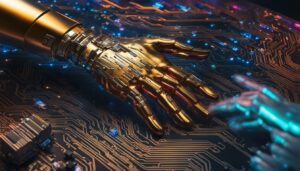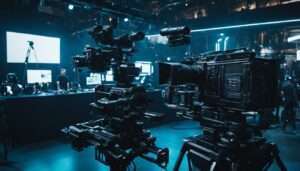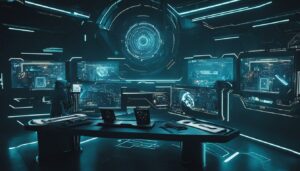As a photographer, I often find myself pondering the future of our industry and the potential impact of AI. In this article, I will delve into the question of whether AI will replace photographers and explore the various aspects of AI’s influence on photography.
Key Takeaways:
- AI technology has the potential to revolutionize photography by automating tasks and optimizing images with greater accuracy.
- AI offers benefits such as assisting with auto-focus, facial recognition, and image enhancement, saving photographers time and effort.
- While AI brings advantages, it also poses challenges, such as accurately capturing human emotion and privacy concerns with AI-powered cameras.
- Traditional photographers are unlikely to be replaced by AI but are more likely to incorporate AI as a tool to enhance their work.
- AI is already being used in photography for tasks like face detection, photo editing, and image recognition in various industries.
What is AI and How Could it Impact Photography in the Future?
Artificial Intelligence (AI) involves teaching machines to think and act like humans. In the context of photography, AI technology has the potential to revolutionize the field. It can automate tasks such as adjusting settings and post-processing, making it easier for photographers to capture and enhance images. AI algorithms can also optimize images with greater accuracy, transforming the way we approach photography.
With AI, photographers can unlock new levels of creativity and efficiency. AI-powered cameras can analyze scenes in real-time, automatically adjusting settings to capture the perfect shot. This technology frees photographers from the technical aspects of photography, allowing them to focus on their artistic vision. AI can also assist in post-processing, automatically enhancing and retouching images, saving photographers valuable time.
Furthermore, AI algorithms have the ability to analyze vast amounts of data, enabling photographers to gain insights about their work and make data-driven decisions. AI can identify patterns, trends, and preferences in photography, helping photographers understand what appeals to their audience and adapt their style accordingly. By harnessing the power of AI, photographers can stay ahead of the curve and embrace the future of the industry.
How AI Could Impact Photography in the Future
| Impact | Explanation |
|---|---|
| Automation of Repetitive Tasks | AI can automate tasks such as adjusting settings and post-processing, freeing photographers to focus on their creativity. |
| Enhanced Image Optimization | AI algorithms can optimize images with greater accuracy, resulting in enhanced quality and visual appeal. |
| Data-driven Decision Making | AI can analyze data to provide insights about photography trends, preferences, and audience engagement. |
As AI technology continues to evolve, we can expect new advancements that will further shape the future of photography. It is an exciting time for photographers, as AI opens up new possibilities and challenges us to think differently about our craft.
Benefits of Using Artificial Intelligence for Photography
Artificial Intelligence (AI) technology offers numerous benefits to photographers, revolutionizing the way they capture and enhance images. By leveraging AI, photographers can streamline their workflow, save time and effort, and create stunning photographs with ease.
One of the key benefits of AI in photography is its ability to assist with image enhancement. AI algorithms can automatically adjust settings, optimize images, and enhance their overall quality. This means that photographers can achieve professional-level results without extensive manual editing, allowing them to focus on their creative vision.
Additionally, AI technology can automate repetitive tasks such as cropping, color correction, and post-processing. This not only saves photographers valuable time but also ensures consistency and efficiency in their workflow. With AI handling these tasks, photographers can devote more time and energy to the artistic aspects of their work.
| Benefits of AI in Photography | Description |
|---|---|
| Auto-Focus and Facial Recognition | AI algorithms can detect and focus on faces, ensuring sharp and well-composed images. |
| Image Enhancement | AI can optimize images by adjusting settings, enhancing colors, and improving overall quality. |
| Automated Post-Processing | AI can automate tasks like cropping, color correction, and other post-processing steps, saving time and effort. |
| Bridge the Gap Between Professionals and Amateurs | AI enables anyone to capture impressive images, regardless of their photography skills or experience. |
| Identifying Technical Flaws | AI algorithms can detect technical flaws in images, ensuring high-quality final results. |
Moreover, AI technology bridges the gap between professional photographers and amateurs. In the past, capturing high-quality images required technical expertise and experience. However, AI allows anyone to create impressive photographs, regardless of their skill level. This opens up the world of photography to a wider audience and encourages creativity and expression.
By harnessing the power of AI in photography, photographers can unlock new possibilities and push the boundaries of their craft. AI technology is a valuable tool that enhances their workflow, enables efficient image enhancement, and empowers photographers to create impactful and stunning photographs.
Challenges of Using Artificial Intelligence for Photography
While Artificial Intelligence (AI) brings numerous benefits to the field of photography, it also poses certain challenges that photographers need to be aware of. These challenges include the limitations of AI in capturing human emotion and the subtleties of facial expressions. AI-generated images may lack the creative touch and artistic vision that human photographers bring to their work. Additionally, AI algorithms require large amounts of data, making it difficult to create models specific to certain types of photography.
One of the privacy concerns associated with AI-powered cameras is the potential for capturing and storing images without consent. This raises ethical considerations and the need for clear guidelines on the responsible use of AI in photography. It is important to address these challenges and ensure that AI technology is used in a way that respects privacy rights and maintains the integrity of the photographic profession.
Limitations of AI in Facial Expression
One of the main challenges of using AI in photography is accurately capturing human emotion and the subtleties of facial expressions. While AI algorithms have made significant advancements in facial recognition, they still struggle to replicate the depth and complexity of human emotions. This limitation can impact the quality and authenticity of AI-generated images, as they may fail to convey the true essence and nuances of the subject’s emotions.
| Challenges | Solutions |
|---|---|
| Lack of Creative Touch | Photographers can incorporate AI as a tool to enhance their work and maintain their unique artistic vision. |
| Large Data Requirements | Further advancements in AI technology are needed to create models specific to different types of photography, while ensuring data privacy. |
| Privacy Concerns | Clear guidelines and ethical standards should be established to address privacy concerns related to AI-powered cameras. |
AI brings both advantages and challenges to the field of photography. While it can automate tasks and enhance image quality, it still struggles to capture human emotion and replicate the creative touch of human photographers. Addressing these challenges is crucial to ensure the responsible and ethical use of AI in photography.
Overall, it is important to recognize that AI is not a replacement for traditional photographers but rather a tool that can enhance their work. By embracing AI technology, photographers can streamline certain processes, improve efficiency, and explore new creative possibilities. Collaboration between photographers and AI is key to leveraging the strengths of both and pushing the boundaries of the photographic medium.
Traditional photographers and AI: Collaboration or Competition?
When it comes to the future of photography, the impact of artificial intelligence (AI) is a topic of significant debate. Will traditional photographers be replaced by AI, or can they find a way to collaborate and coexist? The answer lies in understanding the strengths and limitations of both human photographers and AI technology.
Human photographers bring a unique perspective and creative touch to their work. They have the ability to capture emotions, tell stories, and connect with their subjects on a deep level. These qualities cannot be replicated by AI. In contrast, AI technology excels at automating tasks, analyzing data, and making data-driven decisions. It can assist photographers with tasks like image enhancement, facial recognition, and even composition suggestions.
Instead of viewing AI as a threat, photographers can embrace it as a tool to enhance their creativity and streamline their workflow. By leveraging the power of AI, photographers can focus more on the artistic aspects of their work while AI takes care of the technical details. For example, AI algorithms can help photographers quickly sort and categorize their photo libraries, making it easier to find and showcase their best work. Additionally, AI can generate insights and recommendations based on patterns and trends in the industry, helping photographers stay ahead of the competition and adapt to evolving client preferences.
However, collaboration between traditional photographers and AI requires a thoughtful approach. It’s important for photographers to maintain their artistic integrity and avoid relying too heavily on AI-generated suggestions. Ultimately, the human eye and creative instinct should always have the final say in the composition and style of a photograph. By finding the right balance between human expertise and AI assistance, photographers can harness the full potential of AI technology while maintaining their unique artistic vision.
Table: Key Differences between Traditional Photographers and AI
| Traditional Photographers | AI |
|---|---|
| Bring a unique perspective and creative touch | Excel at automating tasks and making data-driven decisions |
| Can capture emotions and connect with subjects | Assist with tasks like image enhancement and facial recognition |
| Focus on artistic aspects of photography | Analyze data and generate insights |
| Emphasize human instinct and creative instinct | Provide quick sorting and categorizing of photo libraries |
Examples of How AI is Already Being Used in Photography Today
In recent years, the application of Artificial Intelligence (AI) in photography has become increasingly prevalent. AI technology has opened up new possibilities in image recognition, editing, and enhancement. Let’s explore some examples of how AI is already being used in photography today.
AI-Powered Auto Focus
One area where AI has made significant advancements is in auto focus technology. AI algorithms can detect and track subjects in real-time, ensuring that the focus remains sharp and precise. This is particularly useful in fast-paced situations such as sports photography or wildlife photography, where capturing a moving subject with precision is crucial.
Image Enhancement and Editing
AI has also revolutionized the way images are enhanced and edited. AI-powered software can automatically adjust settings such as exposure, contrast, and saturation, resulting in well-balanced and visually appealing images. Additionally, AI algorithms can remove unwanted objects or distractions from photos, saving photographers valuable time in post-processing.
Advanced Image Recognition
AI technology is capable of sophisticated image recognition, which has applications in various fields such as security and healthcare. For example, AI algorithms can analyze medical images and detect abnormalities or assist in the diagnosis of diseases. In the security industry, AI-powered cameras can recognize faces, objects, and even behaviors, enhancing surveillance capabilities.
| AI Applications in Photography | Examples |
|---|---|
| Auto Focus | Real-time subject tracking for precise focusing |
| Image Enhancement | Automatic adjustments of exposure, contrast, and other settings |
| Object Removal | AI algorithms can remove unwanted objects or distractions from photos |
| Image Recognition | Advanced image recognition for security and healthcare applications |
AI’s integration into the world of photography has already shown great promise. From improving auto focus accuracy to enhancing image editing capabilities, AI technology continues to shape the future of photography. As the field of AI evolves, we can expect even more innovative applications and advancements in the realm of photography.
As photographers, embracing and understanding the potential of AI can help us to expand our creative boundaries and streamline our workflow. By harnessing the power of AI, we can elevate our photography to new heights and deliver captivating images that truly resonate with viewers.
Final Thoughts on Whether or Not Photography Will be Replaced by AI in the Near Future
As the world of photography evolves alongside advancements in artificial intelligence (AI), there is a lingering question about the future of the profession: will photographers be replaced by AI? While the capabilities of AI in photography continue to expand, it is improbable that AI will entirely replace professional photographers.
The unique perspective and artistic creativity that photographers bring to their craft cannot be replicated by AI. Photographers have an innate ability to capture emotion and tell stories through their images, something that AI currently struggles to emulate. Professional photographers possess a deep understanding of composition, lighting, and human connection that AI algorithms are unable to fully comprehend.
However, this does not mean that photographers should shy away from embracing AI as a tool to enhance their work. AI can automate time-consuming tasks, provide assistance in image selection and post-processing, and even offer suggestions for creative enhancements. By incorporating AI into their workflow, photographers can streamline certain processes and explore new possibilities.
In the age of AI, the role of professional photographers will continue to evolve. Rather than being replaced, photographers have the opportunity to harness the power of AI and push the boundaries of their own artistic capabilities. By leveraging the benefits of AI alongside their unique vision, photographers can adapt to the changing landscape of photography and continue to create meaningful and impactful images for years to come.
AI-Generated Photos: A New Medium Created with Artificial Intelligence
AI-generated photos have emerged as a new digital medium in the realm of visual art. Leveraging the power of artificial intelligence, these photos are created by transforming existing images through machine learning algorithms. This innovative approach offers a unique creative potential that is shaping various industries and artistic endeavors.
With AI-generated photos, the possibilities for creative expression are limitless. Different genres of AI-generated photos have gained popularity, including meme photos, cute photos, landscape photos, art photos, and even historical photos. These photos can be used effectively in advertising, website design, and other artistic pursuits, adding a touch of novelty and intrigue to visual communication.
AI-generated photos provide artists and designers with a fresh perspective and a wealth of creative opportunities. By utilizing AI technology, they can explore new visual styles, experiment with different compositions, and push the boundaries of traditional photography. This convergence of art and technology opens up exciting avenues for creative expression, fostering innovation and imaginative thinking.
As AI-generated photos continue to evolve and find their place in the world of visual art, they are reshaping the way we perceive and engage with digital imagery. With their unique ability to transform existing photos into something entirely new, AI-generated photos stand as a testament to the creative potential of artificial intelligence in the realm of visual art.
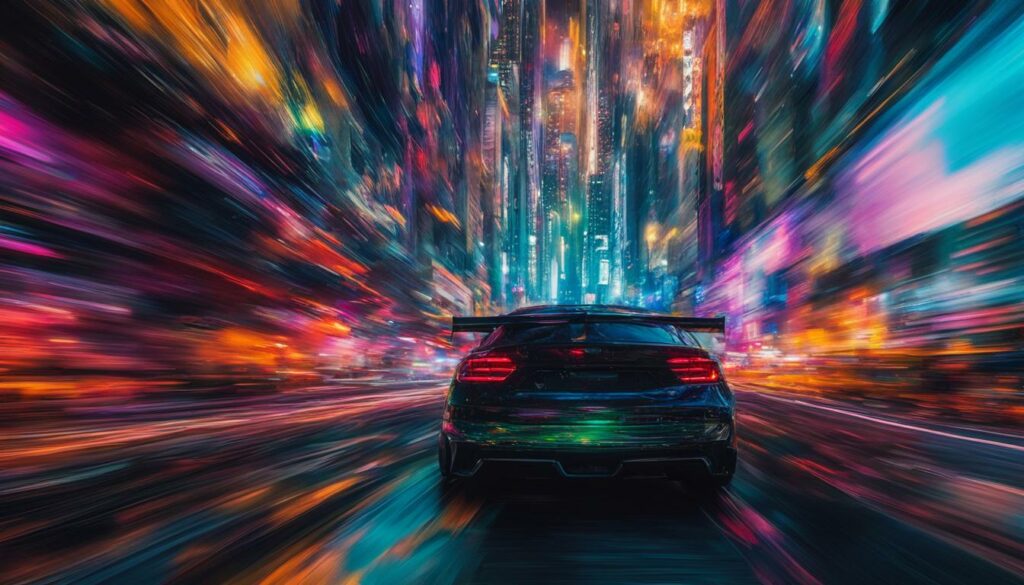
Table: The Creative Potential of AI-generated Photos
| Genre | Description | Applications |
|---|---|---|
| Meme Photos | Humorous and relatable images often shared on social media platforms | Internet culture, social media marketing |
| Cute Photos | Adorable images that evoke feelings of warmth and fondness | Brand promotion, product packaging |
| Landscape Photos | Breathtaking scenes capturing the beauty of nature | Fine art prints, travel publications |
| Art Photos | Abstract and experimental compositions that challenge traditional aesthetics | Contemporary art exhibitions, gallery installations |
| Historical Photos | Digitally reconstructed images of past events and eras | Museums, educational materials |
The Middle Ground: AI-Generated Photos as a Third Option
When it comes to choosing images for our projects, we often face the dilemma of whether to use stock photos or invest in professional photographs. However, there is a third option that offers a middle ground: AI-generated photos. These images, created using artificial intelligence, provide a unique combination of quality, quantity, and affordability.
AI-generated photos are more realistic than stock photos and can be of high quality, making them suitable for a variety of purposes. They are not created by human photographers, which means they offer a fresh and distinctive look. Moreover, AI-generated photos are time-efficient and cost-effective, as they can be easily generated in large quantities.
| Stock Photos | AI-Generated Photos | Professional Photographs |
|---|---|---|
| Often generic and lack uniqueness | Unique and distinctive look | Captured with artistic vision |
| Available for immediate use | Quickly generated in large quantities | May require scheduling and planning |
| Lower cost or even free | Cost-effective with no licensing restrictions | Higher cost due to professional expertise |
Businesses and individuals can benefit from AI-generated photos as a versatile and convenient option. Whether you need images for social media posts, website designs, or marketing materials, AI-generated photos can provide a wide range of options to choose from. By embracing AI as a tool in photography, we can explore new visual possibilities and elevate our creative projects.
Challenges of AI-Generated Photos and Techniques to Improve Them
AI-generated photos have opened up a whole new world of possibilities in photography. However, they also come with their own set of challenges, particularly when it comes to achieving photorealism and accurately rendering facial features. These challenges can result in images that appear distorted or unrealistic, hindering the overall quality of AI-generated photos.
One of the primary challenges in AI-generated photos is achieving photorealism. While AI algorithms have made significant advancements in generating realistic images, there is still room for improvement. Creating images that are indistinguishable from photographs captured by human photographers remains a complex task. The subtle nuances of lighting, shadows, and textures need to be accurately replicated to achieve truly photorealistic results.
Another challenge lies in accurately rendering facial features. Faces are one of the most intricate and complex subjects in photography. AI algorithms often struggle to capture the subtle details of facial expressions and emotions, resulting in images that can appear unnatural or even creepy. Ensuring that AI-generated photos accurately depict facial features is crucial in maintaining the integrity and authenticity of the final image.
To overcome these challenges and improve the quality of AI-generated photos, various techniques can be employed. One approach is to provide more precise and detailed text prompts to the AI model. Clear instructions regarding desired lighting conditions, angles, and emotions can help the algorithm generate more realistic and visually appealing images. Additionally, post-processing techniques in programs like Photoshop can be used to refine and enhance AI-generated photos, enabling photographers to fine-tune aspects such as lighting, color balance, and sharpness.
Table: Techniques to Improve AI-Generated Photos
| Technique | Description |
|---|---|
| Refining Text Prompts | Providing more detailed and specific instructions to the AI model to improve image generation. |
| Post-Processing in Photoshop | Using image editing software to enhance and refine AI-generated photos. |
| Training on Diverse Data | Using a wide range of images as training data to improve the algorithm’s ability to generate realistic photos. |
| Iterative Feedback Loop | Collecting feedback from photographers and users to continuously refine and improve the AI system. |
Despite the challenges, the future of AI-generated photos looks promising. As AI technology continues to evolve, advancements in deep learning and computer vision will undoubtedly lead to improved photorealism and more accurate facial feature rendering. By combining technical enhancements with creative input from human photographers, AI-generated photos have the potential to become an even more powerful and versatile tool in the world of photography.
Legal Considerations of AI-Generated Photos
As AI-generated photos become more prevalent in the photography industry, it is important to understand the legal considerations surrounding these images. Copyright laws play a crucial role in determining the ownership and usage rights of AI-generated photos. While AI technology creates the images, the copyright generally belongs to the person or organization that developed the AI algorithm.
When using AI-generated photos, it is essential to consider the legal status of these images. In many countries, AI-generated photos are considered intellectual property and are subject to copyright protection. However, the legal framework surrounding AI images is still evolving, and specific regulations may vary from one jurisdiction to another.
To ensure compliance with copyright laws and intellectual property rights, it is important to understand the legal status of AI-generated photos in your country. It is advisable to seek legal advice or consult relevant copyright authorities to clarify any uncertainties.
Table:
| Legal Considerations of AI-Generated Photos | |
|---|---|
| Ownership | The copyright generally belongs to the person or organization that developed the AI algorithm. |
| Legal Status | In many countries, AI-generated photos are considered intellectual property and are subject to copyright protection. |
| Evolution of Laws | The legal framework surrounding AI images is still evolving, and specific regulations may vary from jurisdiction to jurisdiction. |
| Seeking Advice | It is advisable to seek legal advice or consult relevant copyright authorities to ensure compliance with copyright laws and intellectual property rights. |
As AI technology continues to advance, it is crucial for photographers and businesses to stay informed about the legal implications and requirements related to AI-generated photos. Understanding the copyright ownership and legal status of these images will help ensure responsible and lawful use in the evolving landscape of photography.
Embracing AI as a Tool in Photography
As a photographer, I understand the concerns and uncertainties surrounding the integration of AI in our industry. However, I believe that embracing AI as a tool can greatly enhance our craft and expand our photographic capabilities. AI technology has shown immense potential in automating repetitive tasks, analyzing data, and pushing the boundaries of creative possibilities.
By incorporating AI into our workflows, we can free up valuable time and energy to focus on the aspects of photography that truly require our artistic vision. AI can handle tasks like organizing and sorting through large volumes of images, allowing us to quickly find and access the shots we need. It can also assist in post-processing tasks by suggesting edits or enhancements, giving us a starting point that we can further customize to our liking.
Furthermore, AI has the ability to analyze vast amounts of data to identify patterns, trends, and preferences. This information can guide us in making informed decisions about our photography, such as understanding what subjects, styles, or compositions resonate with our audience. Ultimately, AI can help us expand our horizons and explore new avenues of creativity that we may not have considered before.
It’s important to remember that while AI can offer valuable assistance in our work, it does not replace the unique perspective and creativity that we as human photographers bring to the table. Our ability to connect emotionally with our subjects and capture moments that evoke genuine emotions is something that AI cannot replicate. Embracing AI as a tool allows us to evolve alongside technological advancements while maintaining our artistic integrity and individuality.
FAQ
Will AI replace photographers?
No, AI is unlikely to completely replace traditional photographers. It is more likely that photographers will incorporate AI as a tool to enhance their work and streamline certain processes.
What is AI and how could it impact photography in the future?
AI, or Artificial Intelligence, involves teaching machines to think and act like humans. In photography, AI technology has the potential to automate tasks, optimize images, and bridge the gap between professional and amateur photographers.
What are the benefits of using artificial intelligence for photography?
AI offers numerous benefits to photographers, such as assisting with auto-focus and image enhancement, automating post-processing tasks, and identifying technical flaws to ensure high-quality final products.
What are the challenges of using artificial intelligence for photography?
AI struggles to accurately capture human emotion and the subtleties of facial expressions. AI-generated images may lack the creative touch of a human photographer, and privacy concerns arise due to the use of AI-powered cameras.
Will the traditional photographer be replaced by AI or will they learn to use it together?
It is unlikely that traditional photographers will be replaced by AI. Instead, photographers are likely to incorporate AI as a tool to enhance their work and collaborate with AI technology.
Can you provide examples of how AI is already being used in photography today?
AI algorithms are used for tasks such as face detection, photo editing, and object removal. AI technology also finds applications in fields like healthcare and security through image recognition and analysis.
What are some challenges of AI-generated photos and techniques to improve them?
AI-generated photos may face challenges in rendering people in photorealistic quality. However, techniques such as proper text prompts and image processing in Photoshop can be used to improve the quality of AI-generated photos.
What are the legal considerations of AI-generated photos?
The legal status of AI-generated photos falls under existing copyright laws, although specific regulations may vary by country. Copyright protection and attribution are important considerations when using AI-generated photos.
How can photographers embrace AI as a tool in their craft?
Photographers can embrace AI as a tool to automate repetitive tasks, analyze data, and expand the creative possibilities in photography. By leveraging AI technology, photographers can push the boundaries of their work while maintaining their unique artistic vision.
